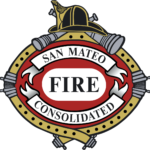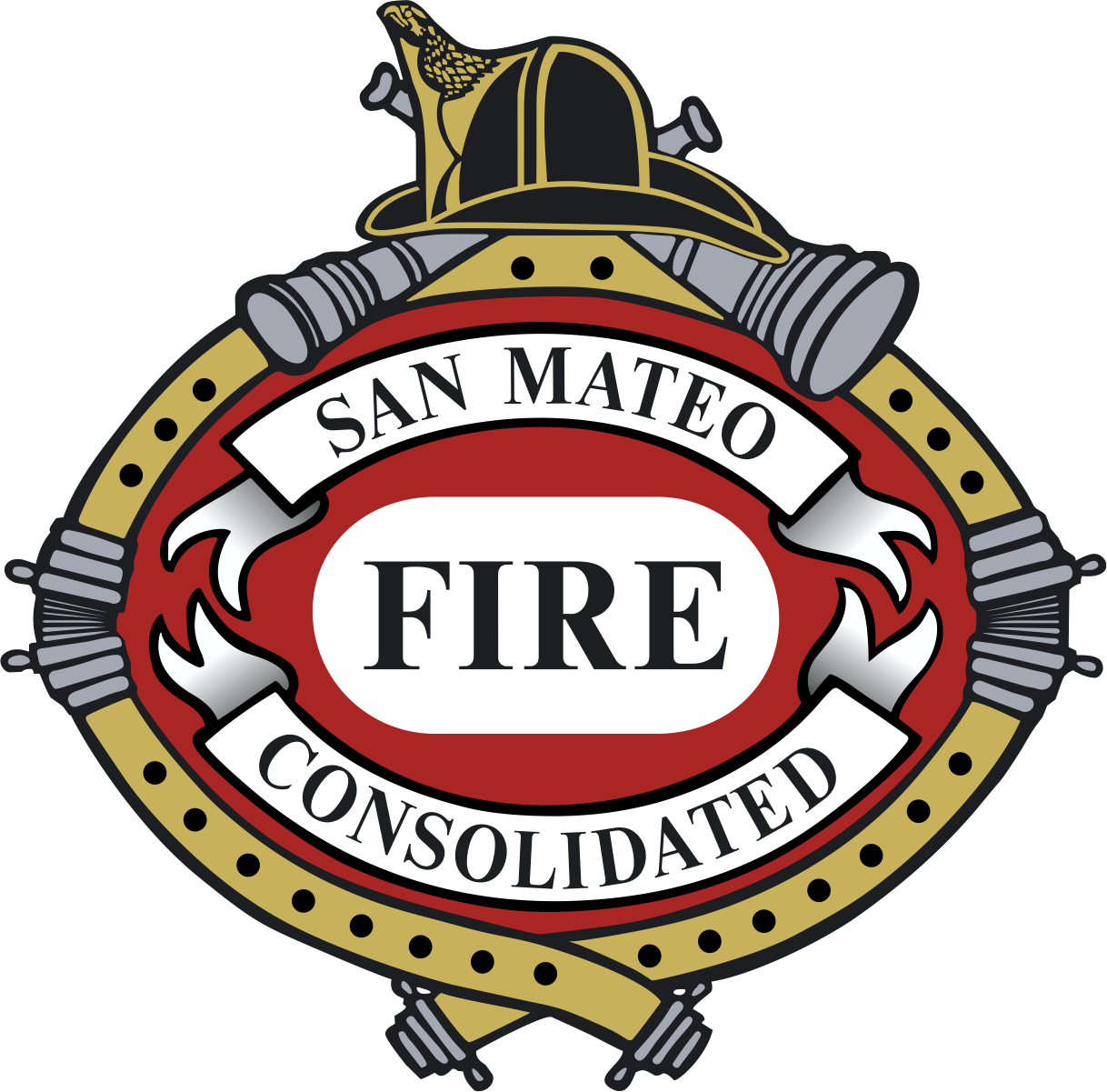Upcoming County Events:
“Be Wildfire Safe & Ready”
Join us for a FREE event to help you and your family get ready for wildfires. Learn from emergency response experts,
connect with local agencies, and take home vital preparedness resources. Free parking, admission and resources.
When: Saturday April 26, 2025: 10:00 AM – 1:00 PM
Where: San Mateo County Event Center, 1346 Saratoga Drive, San Mateo, CA 94403
“Learn About the New Fire Hazard Severity Zones Maps!” Hosted by Diane Papan, Assemblymember, District 21
Attention Residents! CalFire has released updated Fire Hazard Severity Zones (FHSZ) Maps, impacting cities, homeowners, and fire safety requirements. Join Diane Papan to understand what this means for you and how to stay prepared. Hear from CalFire, Insurance Consumer Advocates and the California Department of Insurance.
 What You’ll Learn:
What You’ll Learn:




 ‘New Requirements For Homeowners:
‘New Requirements For Homeowners:




 Local Fire Department Responsibilities:
Local Fire Department Responsibilities:




When: Saturday April 26, 2025: 10:00 AM – 12:00 PM
Where: San Bruno Recreation & Aquatic Center, 251 City Park Way, San Bruno, CA 94066
To attend by Zoom please visit: https://sanbruno-ca-gov.zoom.us/j/86423307972
You can now view the City of San Mateo’s map by clicking here and the City of Belmont’s map by clicking here. (Foster City is not located within a FHSZ)
Update – February 24, 2025
The long-awaited LRA maps have been released.
Today, CAL FIRE released the 2nd Phase of our local Fire Hazard Severity Zone maps. 125 cities and counties along the North Coast and Bay Area received recommendations with the three levels of fire hazard.
PLEASE BE SURE TO READ THE FAQ’S found at the bottom of the page to understand what happens from here.
Fire Hazard Severity Zones (FHSZ) are geographical areas identified based on the risk of wildfires, considering factors such as vegetation, climate, and topography. These zones help determine appropriate land-use regulations and fire prevention measures.
Local Responsibility Areas (LRA) refer to regions where local agencies are primarily responsible for fire protection and emergency response, typically including urban and suburban areas.
Key Takeaways:
- FHSZ Classification: Properties are categorized as Moderate, High, or Very High Fire Hazard Severity Zones based on terrain, vegetation, fire history, and climate conditions. Fire Hazard vs. Risk: The maps indicate hazard potential, not immediate risk, and do not account for mitigation efforts like defensible space or fire-resistant construction.
- Impact on Property Owners
- Homeowners in Very High FHSZ must comply with stringent defensible space and home hardening requirements.
- ordinance requires compliance in all zones
- 100-foot defensible space clearance is mandatory around structures in these zones.
- ordinance requires compliance in all zones
- New construction and renovations in designated zones must adhere to Wildland-Urban Interface (WUI) building codes.
- Property sellers must disclose FHSZ designations during real estate transactions.
- ordinance requires compliance in all zones
- Homeowners in Very High FHSZ must comply with stringent defensible space and home hardening requirements.
- See the FAQ’s section below for more information on the Maps, Adoption process, Insurance Information, and more.
Legislative Updates:
The recent updates to Fire Hazard Severity Zones (FHSZ) in California provide a more accurate assessment of wildfire risks based on modern climate data and fire modeling. These updates affect both State Responsibility Areas (SRA) and Local Responsibility Areas (LRA), influencing fire prevention measures, building codes, and real estate disclosures.
- Senate Bill 63 (2021) now requires FHSZ classifications to include Moderate and High zones in addition to Very High, expanding fire hazard oversight.
- Assembly Bill 337 (1992) originally mandated the identification of Very High Fire Hazard Severity Zones following devastating wildfires.
- Assembly Bill 211 (2022) requires local agencies to adopt Moderate, High, and Very High FHSZ designations within 120 days of state recommendations. However, local governments cannot downgrade hazard levels identified by the state but may increase them if justified.
- Executive Order
- Senate Bill 9 (SB9)
- LRA Legislation Factsheet Flipbook

Mapping & Compliance:
- The State Fire Marshal is responsible for updating FHSZ maps, which are used to enforce fire safety standards across the state.
- Residents can check their property’s FHSZ status online at osfm.fire.ca.gov/FHSZ.
- Local jurisdictions are required to review and adopt the updated maps, ensuring communities are better prepared for wildfire threats.
- Map Adoption Schedule at a Glance (Thank you League of CA Cities)
What do the Maps Measure?
The maps show the physical conditions of landscapes, including fuel loading, slope, fire weather, and other factors (such as wind) that are major causes of wildfire spread. The maps identify fire hazard not risk and are designated in three categories: moderate, high, and very high. Catastrophic risk is used as part of the modeling efforts for fire insurance.
Fire “hazard” vs. Fire “risk”
Fire “hazard”: is based on physical conditions that create a likelihood and expected fire behavior over a 30 to 50-year period without considering mitigation measures such as home hardening, recent wildfires, or fuel reduction.
Fire “risk”: is the potential damage a fire can do to the area under existing conditions, accounting for any modifications such as fuel reduction projects, defensible space, and ignition resistant building construction.
Why does this matter?
The categories designate fire hazard, which then requires specific actions and mitigation measures, including meeting California Building Code Chapter 7A, defensible space, and fire safe regulations, per each category below. These measures are preventative and intended to help disclose fire hazards.
Wildland Urban Interface (WUI) Fire Protection Regulations by Zone
For more information, please visit: Wildland Urban Interface (WUI) Fire Protection Regulations by Zone
Explore Fire Hazard Severity Zones
The Fire Hazard Severity Zone (FHSZ) maps are developed using a science-based and field-tested model that assigns a hazard score based on the factors that influence fire likelihood and fire behavior. Many factors are considered such as fire history, existing and potential fuel (natural vegetation), predicted flame length, blowing embers, terrain, and typical fire weather for the area. There are three levels of hazard in the State Responsibility Areas: moderate, high, and very high.
Fire Hazard Severity Zone maps evaluate “hazard,” not “risk”. They are like flood zone maps, where lands are described in terms of the probability level of a particular area being inundated by floodwaters, and not specifically prescriptive of impacts. “Hazard” is based on the physical conditions that create a likelihood and expected fire behavior over a 30 to 50-year period without considering mitigation measures such as home hardening, recent wildfire, or fuel reduction efforts. “Risk” is the potential damage a fire can do to the area under existing conditions, accounting for any modifications such as fuel reduction projects, defensible space, and ignition resistant building construction.
- Fire Hazard Severity Zones viewer in the State Responsibility Area (SRA), Effective April 1, 2024
- Find your zone by entering your address on CalFire’s Zone Viewer
You can enter your address to locate your property on a map showing Fire Hazard Severity Zones. Due to the nature of this content, some users who require Assistive Technology may experience accessibility issues. If you experience any problems while trying to access this content, please call the hotline at (916) 633-7655 or e-mail: FHSZinformation@fire.ca.gov.
Fire Hazard Severity Zones viewer in the Local Responsibility Area (LRA). Adoption process is in progress and first reading will be announced at a later time.
Resources and Videos
Introduction Video: Learn about Fire Hazard Severity Zone in LRA
The History of Fire Hazard Severity Zone Maps
Fire Hazard Severity Zone maps arose from major destructive fires, prompting the recognition of these areas and strategies to reduce wildfire risks. Legislative response led to mandated mapping across California under the California Public Resources Code 4201-4204, encompassing all State Responsibility Areas (SRA).
Watch this video on the history of Fire Hazard Severity Zones.
What are Fire Hazard Severity Zones?
The State Fire Marshal is mandated to classify lands within State Responsibility Areas into Fire Hazard Severity Zones (FHSZ). Fire Hazard Severity Zones fall into one of the following classifications:
– Moderate
– High
– Very High
The California laws that require Fire Hazard Severity Zones include California Public Resources Code 4201-4204, California Code of Regulations Title 14, Section 1280, and California Government Code 51175-89.
Continue learning about Fire Hazard Severity Zones with this video from Cal Fire.
FAQ’s About the New Maps
Can the local agency, decrease the severity levels identified on the State Fire Marshal’s Fire Hazard Severity Zone Maps? No.
The local agency cannot decrease the level of fire hazard severity zones as identified on the State Fire Marshal maps. Government Code 51179(b)(3). The local agency can do the following:
– Include areas within the District, Town or County not identified as very high fire hazard severity zones by the State Fire Marshal, as very high fire hazard severity zones following a finding supported by substantial evidence in the record that such designations are necessary for effective fire protection within the area. Government Code 51179(b)(1).
– Include areas within the District, Town or County, not identified as moderate and high fire hazard severity zones by the State Fire Marshal, as moderate and high fire hazard severity zones, respectively. Government Code 51179(b)(2).
– Increase the level of fire hazard severity zone as identified by the State Fire Marshal for any area within the District, Town or County. Government Code 51179(b)(3). 2
How can I provide public comment on the maps?
Please send any comments to fire@smcfire.org
Insurance Q&A from Insurance Commissioner Ricardo Lara

